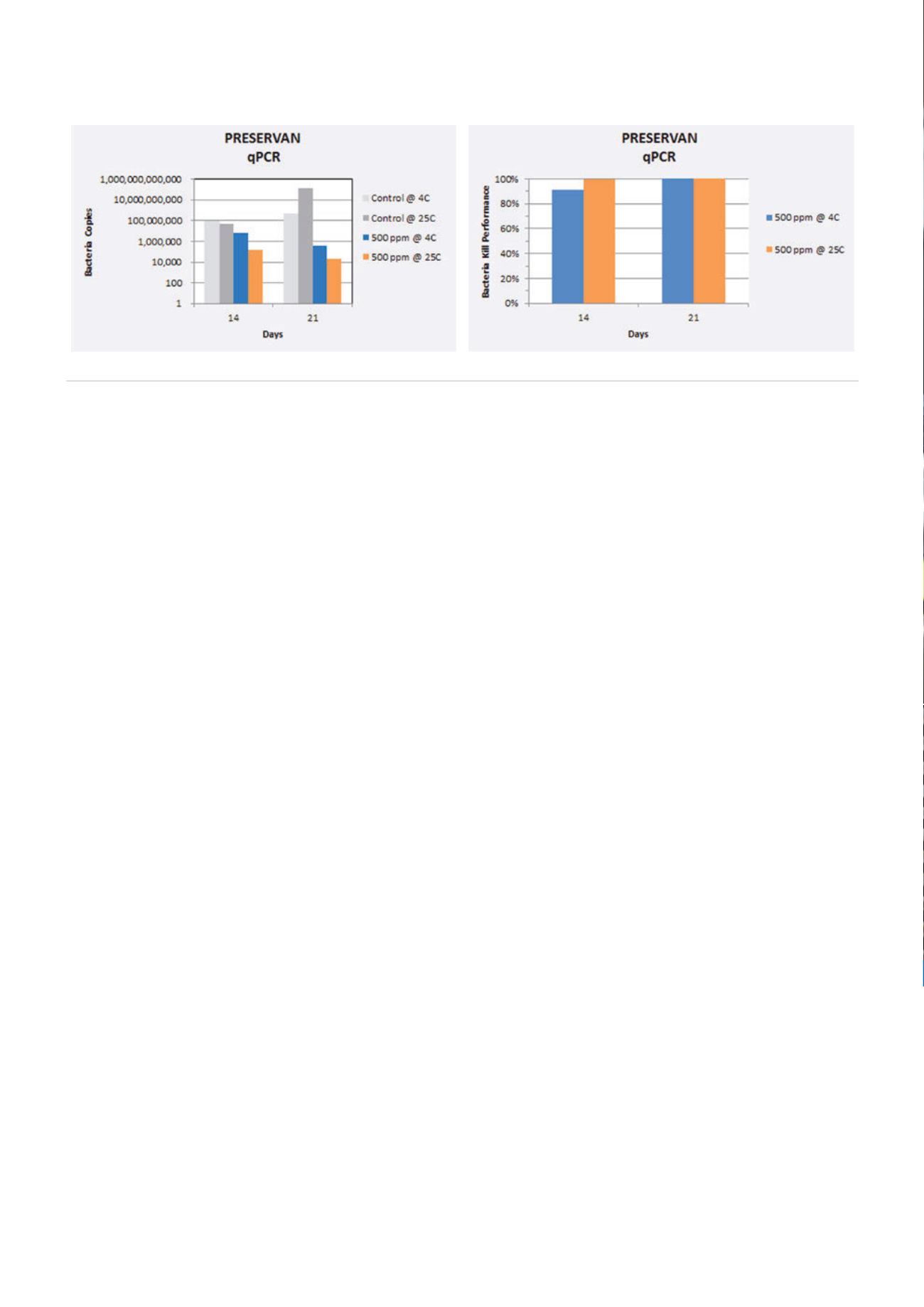
and repair activities, process vessel pressure testing, subsea
hydrotesting and process tubular hydrotesting activities.
The primary object of the Clariant invention was to
provide a range of simple to use, single-use, hydrotest
formulation systems with strong oxygen scavenging properties,
biocidal properties to negate any corrosion due to biological
activity, corrosion inhibition due to adsorption to the metal
surface and visual leak detection due to the presence of a
dye. This has also been formulated in an environmentally-
acceptable package, as legislated by many different regulatory
bodies worldwide (for example, CEFAS, NICNAS, TSCA, DSL,
etc.). This unique combination has superior performance to
formulations and individual chemicals disclosed in the prior
art. Another objective was to provide a formulation suitable
for application under extreme conditions, such as very high
salinities as well as high (up to 100°C) or low temperatures
(down to 0°C), which are sometimes encountered during
the hydrotesting of equipment. The formulations can be
ubiquitously used in all types of hydrotest fluid matrices, such
as seawater, drill water, potable water, river water, pond water,
lake water, aquifer water, produced water and brines.
The new PRESERVAN products comprise tailored
formulations of:
)
For corrosion protection, a quaternary ammonium
compound, specifically chosen for its superior
biodegradability.
)
An oxygen scavenger.
)
Optionally, an appropriate biocide (for example, DMDM
hydantoins or Dazomet).
)
An environmentally-acceptable dye.
There are many benefits to using combination products;
these have been proven in multiple extensive tests and field
applications. Single-blend products decrease complexity
– one product and one injection point – and also reduce
chemical movement, thus improving logistics and safety. The
high level of performance offered by these multi-functional
products is equivalent to dosing with individual products
separately; treatment time and equipment costs are also
reduced. Finally, there are no chemical compatibility issues, as
the ‘cocktail’ of chemicals are already combined in one fluid.
Extensive testing was performed on this enhanced
technology in order to deliver the best, most sophisticated
products for even the most demanding hydrotest applications.
Employing in-house application development testing
procedures (based on industry standards such as API and
NACE), orbisphere testing was used to measure and record
dissolved oxygen concentration, and a linear polarisation
resistance (LPR) electrochemical technique was used to
measure and record fluid corrosivity and corrosion protection.
Results from these tests showed that PRESERVAN rapidly
reduced the dissolved oxygen concentration to below 10 ppb
within 12 mins at 25°C and 16 mins at 4°C (Figure 1).
Using the LPR corrosion monitoring technique, PRESERVAN
quickly decreased the corrosion rate in the first hour to
0.01 mm/yr and stabilised at 0.0027 mm/yr, representing
99.5% inhibition (Figure 2).
Specialist, best-in-class third-party providers were used for
bacteria testing and included the latest NACE TMO 212-2012
for detection, testing and evaluation of MIC. The state-of-
the-art molecular test method quantitative polymer chain
reaction (qPCR) was selected to test biocidal performance.
qPCR, a modification of end-point PCR, detects amplified DNA
during the PCR process. A highly sensitive camera detects
fluorescence produced by the incorporation of a fluorescent
binding dye in the sample, which gives rise to a more accurate
and precise quantification of DNA. Unlike conventional
culture-based methods such as most probable number (MPN),
qPCR provides a qualitative, highly specific and accurate
determination of active, inactive and even dead bacteria in
any given sample.
To ensure the study was as harsh as possible, all five key
bacteria species responsible for MIC were included in the
qPCR testwork: desulfovibrio desvlfricans (SRB), shewanella
putrefaciens (IRB), thiobacillus thioparus (SOB), pseudomonas
aeruginosa (biofilm) and methanolibacter arachidis
(methanogen).
Results from this test method showed that PRESERVAN
delivered an exemplary kill performance of 99.9% when
compared to the controls at 4°C and 25°C (Figure 3).
Figure 3.
qPCR data shows a 99.9% kill when compared to the controls.
84
World Pipelines
/
JUNE 2015


